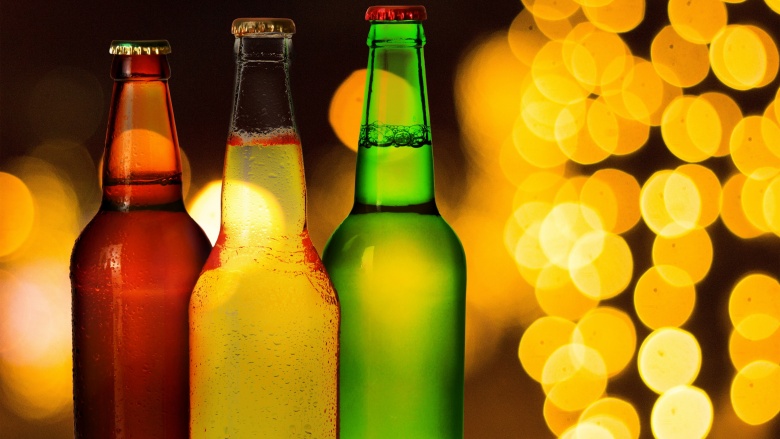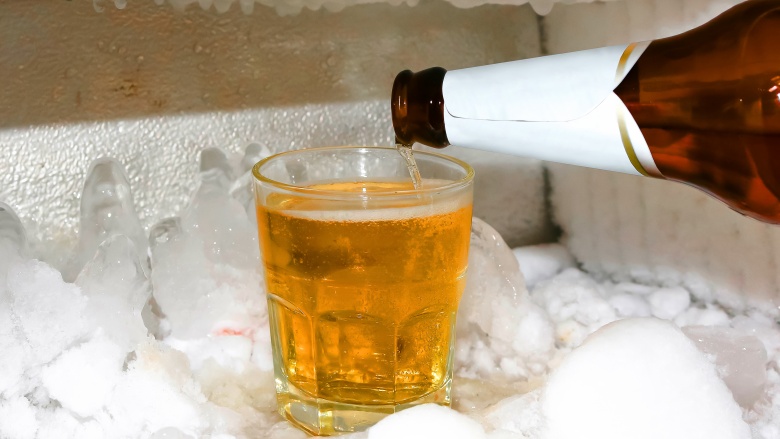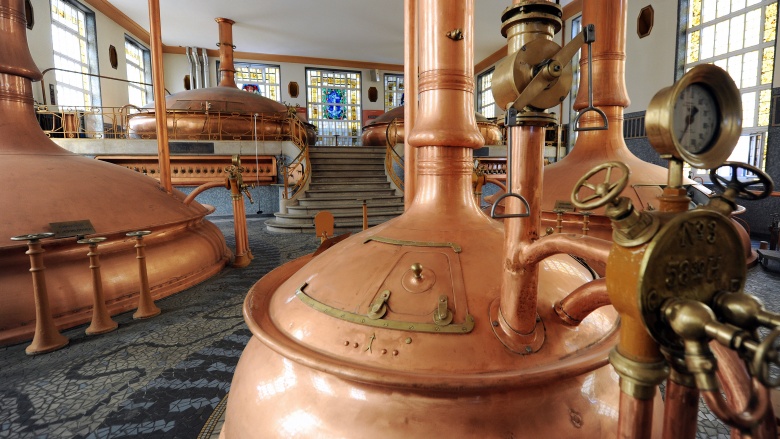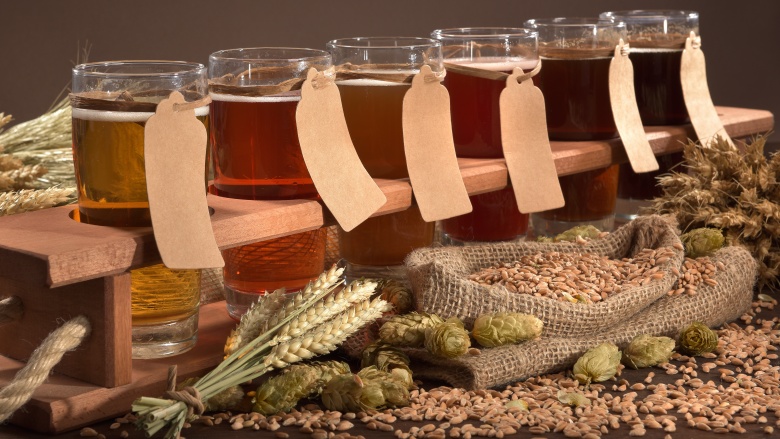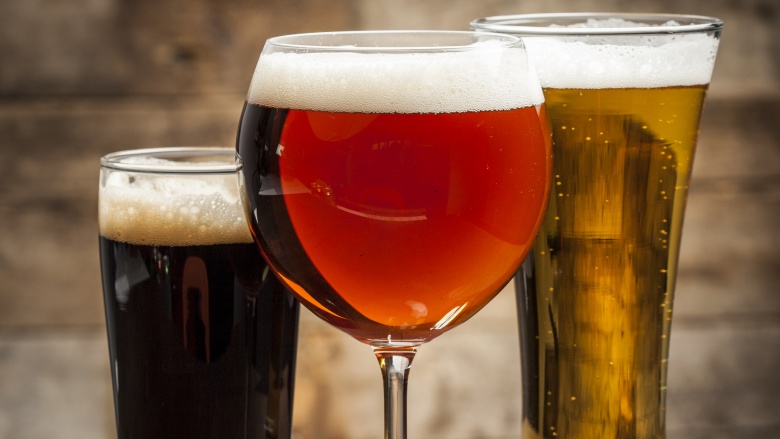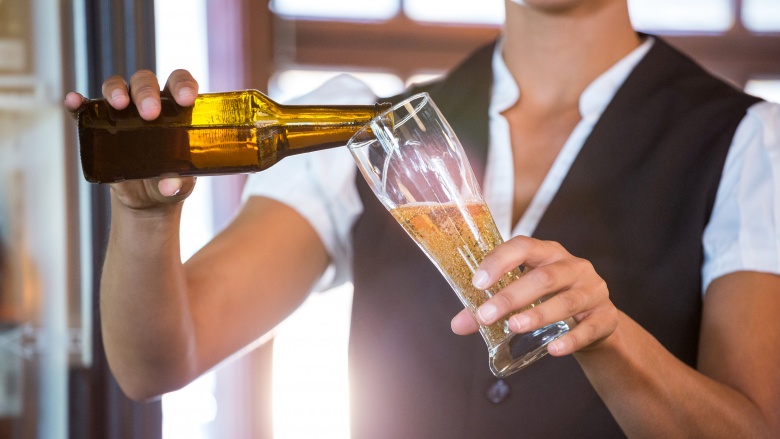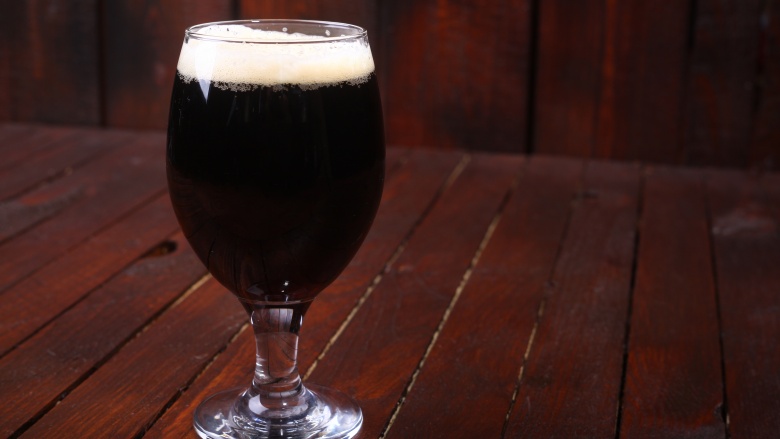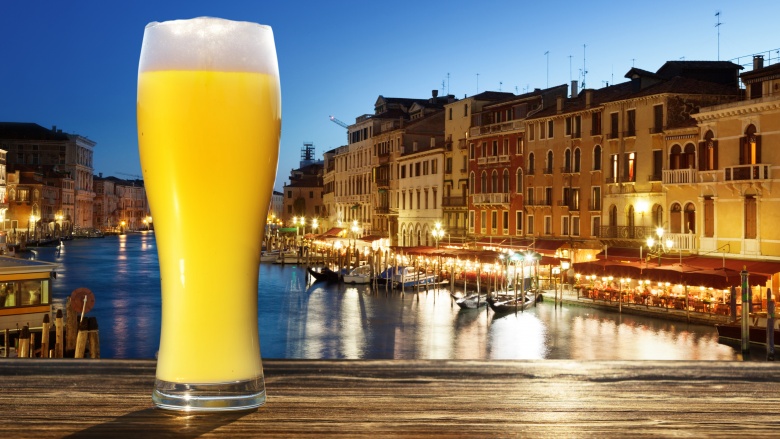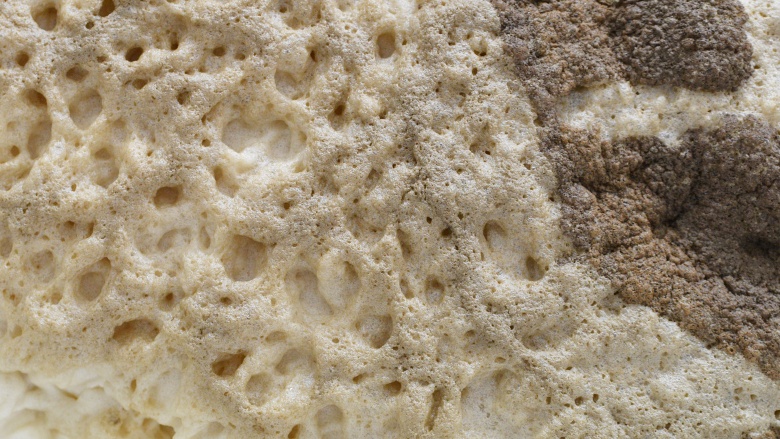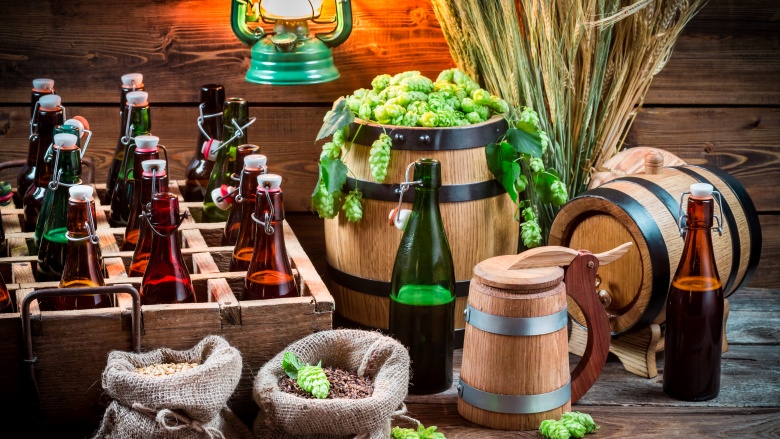What You Should Know Before Taking Another Sip Of Beer
What's that, you say? You're not interested in becoming a beer snob? There's nothing wrong with that. Just because you're not a beer snob, though, doesn't mean that you won't find some of the basics about beer and beer drinking pretty fascinating. Whether you're looking to try something new after work or get the most out of your purchase from the local brew pub, there are a few things that you should know about beer before you take another sip. You'll appreciate the knowledge!
Bottle colors
Let's start right at the beginning, when you're in the store checking out the shelves, looking for something new to try. Everyone has their own unique tastes (and, contrary to what most beer snobs will tell you, there's nothing wrong with that). There are, however, a few things you should know to make sure you're getting the best product possible. First? The color of the bottle makes a big difference.
You've probably noticed that bottled beer typically comes in three different color bottles: clear, green and brown. There's always a chance that beer will go skunky (more on that in a minute) before you get the chance to drink it, and that basically means it's gone bad because of a reaction that happens between light, the hops, and a chemical called flavin. We've known about skunked beer since at least 1875, but we've only really understood how it works since 2001. Without getting into too much boring detail, the more light that enters the bottle, the faster it'll react and the greater the chances are that you'll open a bottle and it'll be skunked.
So, what's that mean? Most serious home brewers choose brown bottles for their beer, and you'll notice that a lot of commercial brewers do, too. The brown glass blocks most of the light from getting into the bottle and ruining your beer, and those are your best bet. The clear bottles? Give those a miss, especially if they're sitting on the top shelf in full light.
Green bottles are common, too, for a pretty wild reason. During World War II, the demand for brown glass rose. Breweries that had been using brown glass needed to find another alternative, and the idea of using clear glass just wasn't going to happen. They started using green bottles and for some, like Heineken, the green bottles became a part of their brand. (Speaking of Heineken, here's some trivia for you to use at your next party. Heineken bottles were once square, and they were called WOBO, for World Bottle. The idea was that after they were emptied, they could be recycled and used as bricks in building projects.) Originally, the green bottles didn't offer much more in the way of protection, but most of them are now treated with a protective UV coating to keep their contents from turning bad. The moral of the story? Green and brown are good. Clear? Stay away from clear bottles.
Storing and serving temperatures
You've picked out your beer and you've gotten it home. Now, where should you keep it? Aside from the across-the-board recommendation that beer should be stored in a dark place (no matter what the color of the bottle is), there are a few other tips for how cold your beer should be to get the most out of the flavor. The American Homebrewers Association gives some great temperature guidelines, but first, a bit of explanation. A beer that's served too cold can mean some of the flavor is overpowered by the sensation of coldness, while beer that's served at a slightly warmer temperature will have a more well-defined and stronger taste. It's a small window, though, and beer that's too warm will start to taste bitter. (And no, drinking warm beer in Britain is absolutely not a thing.)
So, what's the right temperature for your beer? That depends on the type. Light lagers reach their peak when they're served cold, between 33 and 40 degrees Fahrenheit. Pilsners and pale lagers overlap slightly, but can be just a bit warmer, typically between 38 and 45 degrees. Blonde ales, Belgians, and stouts (with nitro) are next, with a recommended serving temperature between 40 and 45 degrees. Wheat beers and lambics are best between 40 and 50 degrees, while dark lagers and any IPA are tastiest between 45 and 50 degrees Fahrenheit. Other stouts and porters should fall between 45 and 55 degrees, while beers like cask ales, Belgian dubbels, and strong lagers should be between 50 and 55 degrees. That's a lot to remember, and if you're not a fan of numbers, just remember that the weaker the beer, the colder it should be.
If you're a stickler for serving temps, remember to serve it a few degrees colder than temperature you're aiming for, since it'll warm a bit when it hits the glass — or when someone holds that glass in their hands.
Beer acronyms: ABV
And speaking of strong and weak beers, how about a little inside information on ABV? ABV means Alcohol by Volume, and it's a measure of the percentage of alcohol in your beer. Figuring it out is more complicated than you might think, too.
Before fermentation starts, you have a liquid that's called wort and is basically all the sugars that have come out of whatever type of grain is being used. When the wort is at a temperature of 60 degrees Fahrenheit, brewers take a hydrometer reading called original gravity, or OG. Yeast is added, and once the fermentation process is done, another reading is taken. That's the beer's final gravity, or FG. Then, it's just math. Subtract FG from OG, multiply by 131, and you'll have your ABV. The higher the number, the stronger the beer. (In case you're wondering who's credited with brewing the world's strongest beer, it's Sam Adams. Their 2012 Utopia clocked in at a whopping 29 percent ABV.)
Why should you know what ABV is? The first reason is simple enjoyment. If you're not a fan of the taste of something with a high alcohol content, you're going to know what to stay away from if you see an ABV in the 9 percent range or higher. It's also how you can tell what the best temperature will be to serve it at, since stronger beers should be served at warmer temps. Not all breweries will use ABV (although it's becoming more and more common). Sometimes, you'll see ABW listed on a bottle, and that stands for Alcohol by Weight. That's not the same, and if you want to know the ABV just multiply the ABW by 1.25.
Beer acronyms: IBU
If you're looking for your new favorite, being familiar with the IBU of a beer is going to be a big help in making sure you pick out something you're going to like. IBU stands for International Bitterness Unit. You might assume it's going to tell you how bitter the beer is going to be, but that's only partially right. What it actually measures is the presence of something called isohumulome, which is a compound that's produced from the breakdown of hops. The more isohumulome that's in your beer, the higher the IBU, and the more bitter it will taste. That's just a general sort of rule, though, and it's also important to note that bitterness is only one aspect of what it is you're going to be tasting. There's a difference between the levels of isohumulome and what's called perceived bitterness, and some flavors just work with a certain amount of bitterness.
So, that's a great thing to know and all, but what do the numbers actually mean when you're talking about taste? The IBU scale goes from 5 to 122, with the bitterness increasing as the numbers increase. It's not an absolute guide, but if you're looking to try something new, it might be a good place to start.
How to tell if it's skunked
You're kicked back, relaxing, and ready to enjoy that beer you've been waiting for. Unfortunately, it's not always that easy, so you should know a little bit about skunky beer. First, it's going to smell wrong, which might seem difficult to recognize if you're not familiar with the beer. The smell of skunked beer is usually described in a couple of different ways, likened to sulphur, rotten eggs, wet books, or actual skunks.
It turns out, there's a good reason for that likeness. The chemical that causes your beer to be ruined is almost the exact same chemical that actual skunks produce. You can probably tell any time there's an angry skunk within a few city blocks of your house, and this chemical's just as strong. It only takes one molecule in a billion to ruin your entire beverage, and that's just sad. The moral of the story? If you think it smells funky, it probably is.
The shape of the glass
There are a ton of different types of beer glasses, and they're not just for variety and show. Different beers are generally associated with a specific type of glass, and there's a good reason for it all. There are so many different styles of beer and glassware, you could be reading up on it all afternoon, but there are a few examples that might give you a good idea of why the shape of the glass is important.
First, the most distinctive: the Stella Artois chalice. The oval shape was designed so that when the beer is poured, it easily develops and keeps its head. It also helps prevent bubbles from forming in the beer itself, and there's even a reason for the stem: it helps keep the heat of your hand from warming the beer. The chalice shape is also popular for Belgian-style beers for the same reason. It helps the beers keep their head, and, in the case of these chalices, the standard wide bowl size encourages you to take more than a delicate sip.
One of the other glasses you might see a lot of is the pilsner glass, a tall, thin and usually tapered glass. That's the best for not only keeping a head, but managing a heavily carbonated beverage, too. While the sides of a pilsner glass are straight, a weizen glass has curved sides. These are great for wheat beers, keeping the right amount of head while helping to keep any sediment at the bottom of the glass. Some suggest glassware you might typically associate with other types of alcohol as being great for specific kinds of beer, too. A snifter glass, like you'd typically use for something like brandy, is said to magnify the strong aroma of dark beers and particularly IPAs.
Pour it right!
Regardless of what glassware you choose to use, you should definitely pour your beer out of the can or bottle into something else — if not for the aroma, than at least to appreciate it's other qualities. The key to this is making sure you have a completely clean glass first, and while that might seem like a no-brainer, it's worth noting that any glassware that sits in your cupboard for too long can pick up some dust.. Rinsing the glass before you pour won't just clean it, it'll make the inside of the glass more slippery. That's a good thing, and it'll help you get the smoothest pour possible.
In general, the best way of pouring involves tilting the glass 45 degrees and pouring so that the stream of beer hits about the middle of the side of the glass. When you're about halfway through your pour, straighten the glass and finish pouring the rest directly into the center of the glass. This will give your poured beer a head, but not too much of a head, and that's pretty critical. (Keep reading, you'll find out why in a minute.)
There are exceptions to this rule. Guinness has a whole method that's particular to it, and that involves pouring it to the right level then letting it settle before topping it off. For beers with heavy carbonation, you can leave the glass tilted for the entire pour, and the carbonation will give you the right amount of head. Whatever you do, don't pour directly into the middle of the glass. You'll end up with all foam and not much liquid — and no one wants that.
Is foam a good thing?
Generally, yes. Many beers should have a foamy head of about an inch when you've finished pouring, and that's because when the bubbles pop, they release tiny bursts of the beer's aroma. Everyone knows a good portion of our taste comes from our sense of smell, and that makes beer foam important. The foam also serves to add texture to your beer, and the difference between drinking a Guinness with, say, a proper head is hugely different from drinking one with none.
You might have noticed that some beer glasses are etched on the inside — that's to encourage more foam. It starts a process called nucleation, which allows tiny bubbles to gather on the edges of the etched area. When they break free, they rise to the surface and keep the head of your beer fresh.
What cloudiness means
This one depends hugely on the beer, and chances are you might be more familiar with the idea of a crystal-clear beer than a cloudy one. For many beers, clarity is a major thing to strive for. Your first impression is based on what the beer looks like, after all, and cloudy, hazy beer might just look unappetizing.
Depending on the type of beer, though, cloudiness might not be a bad thing. Hefeweizen is a type of German beer made with a method and yeast that keeps it cloudy even after the process is finished. Because the yeast remains suspended in the beer, and because of the high protein content, haze is expected. The Belgian witbier is also hazy, and in fact, it's an important mark of quality.
Some beers are absolutely not supposed to be cloudy, and if they are, it's a sign that there's something not right happening in your glass. If a batch has been exposed to some kind of contaminants, like bacteria, it can make the final product hazy. If you're getting a beer from a tap, it might be a sign that they haven't cleaned their tap lines in a while and, in that case, don't drink it. (It's not dangerous, just disgusting.)
What's the deal with floaties?
Beer haze and cloudiness is one thing, it's a uniform, smoky look to your beer. Floaties are something else, and here, it looks like there's a bit of dandruff floating in your beer. That can mean a few different things, and it's usually found in craft beers and home brews.
Floaties might be nothing more than yeast sediment. If the beer didn't sit long enough for all the yeast to settle (or if it wasn't poured properly, to leave the sediment in the bottom of the bottle), you could end up with some bits floating in your glass. When this happens with bottle-conditioned beers, it just means that fermentation was allowed to continue after the beer has been bottled, and this is just the yeast. No biggie.
In some cases, the floaties might look every bit like snowflakes drifting through your beer. This can mean that the beer's gone way past its healthy shelf life, meaning you should avoid it. If you're in doubt, give it a sniff. If it smells bad or particularly musty, that's a sign that it's either gone off, or was exposed to some kind of contaminant at the brewery or bottling facility.
Aging beer and freshness
This one's a little less straightforward than some of the other tips, and it's worth talking about in case you've stumbled across something that you'd really like to save for a special occasion. In most cases, that special occasion is today, and saving your beer? It's not going to get much better and, in some cases, it can go bad.
First, a few general rules (and there are always exceptions). If you're going to try to age a beer, make sure it's over 7 percent ABV. Check for a date on the bottle. If the brewer put one there, it's for a reason. Sometimes, a bottle will have an "Enjoy after" date, and that means that it's been brewed specifically to age. Otherwise, if there's a "best by" date, heed that advice. Some beers will have instructions for whether or not they can be aged right on the label, and it's worth looking for. When you do age beer, it will generally become less bitter, more harsh, and some can develop a flavor that's referred to as "meaty". If that sounds gross, it can be, but it's all in your preferences.
The bottom line is, beer is here for your enjoyment, so enjoy it!

